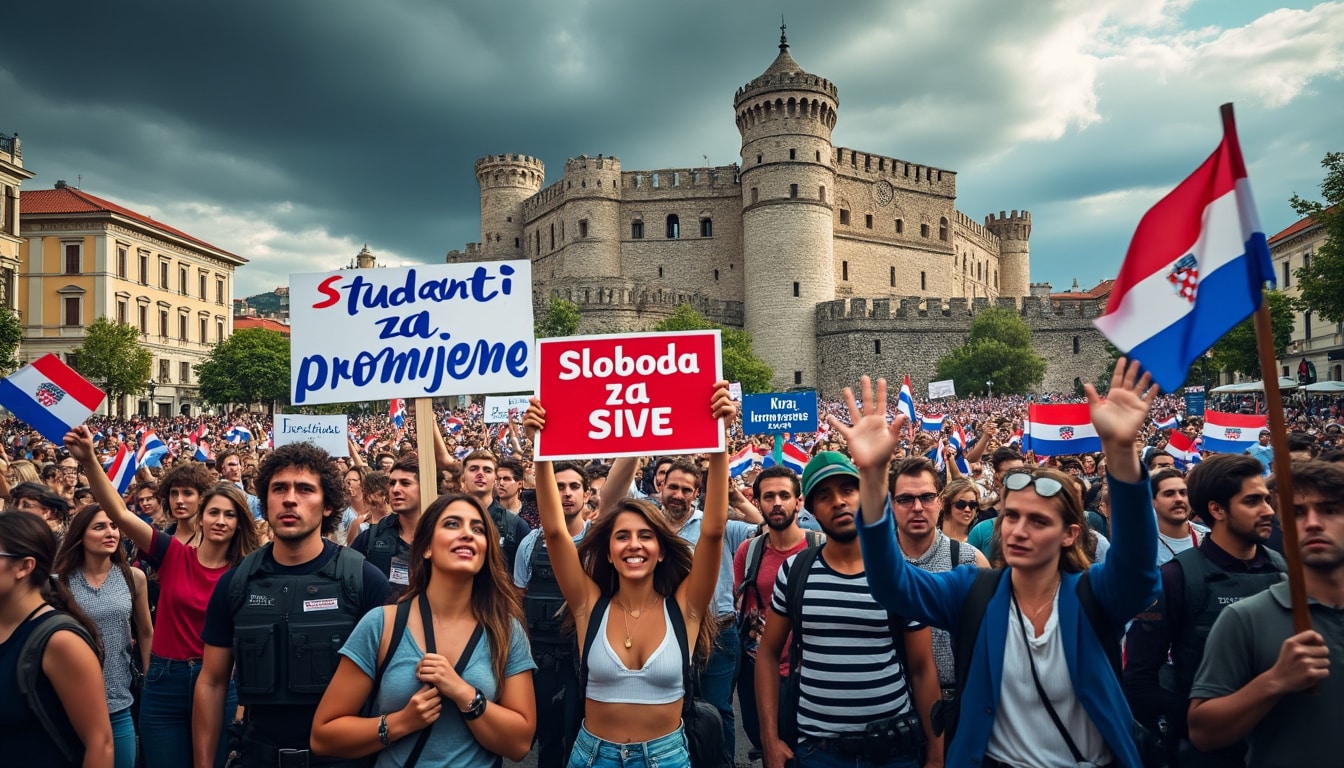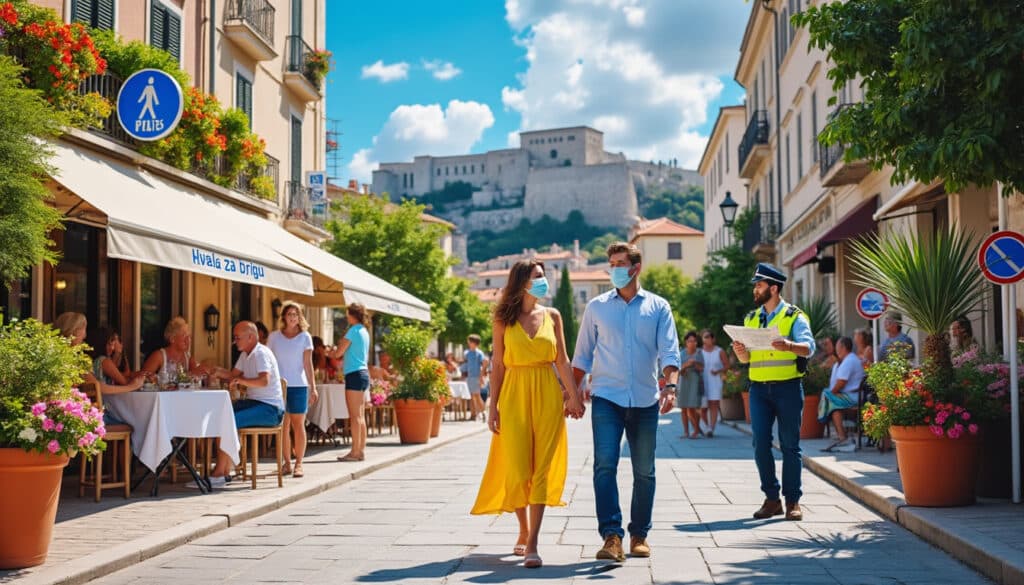Recent years have seen the continuation of a turbulent legacy of protests and social unrest in the city of Split. Known for its stunning Adriatic coastline and historical significance, this coastal city bears a complex political and social history characterized by ethnic tensions, wartime conflicts, and ongoing struggles for political identity and autonomy. The story of Split is far from a simple narrative of a tourist paradise; beneath its picturesque façade lies a city that has become a crucible for ethnic discord and political unrest. Across the city, tensions have occasionally flared, revealing a myriad of challenges faced by its inhabitants in the 21st century. This article delves into the historical roots of these tensions, examines recent protest movements, and explores the broader implications for the region and its citizens.
Historical Context: Ethnic Tensions and Conflicts in Split
The city of Split, set against the serene beauty of the Adriatic Sea, has a history marred by ethnopolitical conflicts. In the early 20th century, Split was a site of significant unrest involving Croats and Italians. These tensions stemmed from the competing national aspirations following the dissolution of the Austro-Hungarian Empire after World War I. As Italian irredentists sought to annex regions along the Adriatic coast into Italy, ethnic clashes became increasingly common.
From 1918 to 1920, a series of violent altercations occurred in Split, characterized by bitter battles between these two ethnic groups. One of the most notorious clashes took place on July 11, 1920, resulting in deaths on both sides, sparking international outrage, and leading to retaliatory violence elsewhere, such as the destruction of the Slovenian Cultural Centre in Trieste by Italian Fascists. The roots of such ethnic discord are deep-seated and can be traced back to longstanding disputes over territorial control and cultural dominance in the region.
This period of turmoil saw various factions vying for influence. For instance, the Autonomist Party, largely representing the interests of the pro-Italian populace, clashed ideologically with the pro-Yugoslav People’s Party. The Italian occupation of several Adriatic cities at the time exacerbated these tensions, embedding a sense of historical grievance among the local population. Such conflicts were not merely territorial disputes but battles over identity and survival, where every confrontation could alter the fate of communities living along the Adriatic shores.
Even after the decline of these violent confrontations, the ethnic makeup of Split bore the scars of division, as revealed by the 1910 census data showing that a significant portion of the city’s population was composed of Italians. The conclusion of World War I did little to resolve these tensions, as the question of citizenship—whether Italian or Yugoslav—remained contentious well beyond the signing of the Treaty of Rapallo in 1920.
The historical narrative of Split is not just a backdrop for understanding its current social unrest but an intrinsic part of it. Ethnic tensions have shaped the city’s political fabric and continue to influence its social dynamics. The memory of past conflicts often resurfaces during modern protests and civil unrest, underscoring the persistent divisions and the challenges of achieving genuine harmony and peace in a city rich with historical narratives and ethnic diversity.
In the context of ongoing global dialogues around identity and nationalism, the case of Split offers a poignant reminder of the complexities involved in regional reconciliation processes. These complexities are not just local issues but resonate with international themes of ethnic coexistence and political sovereignty.
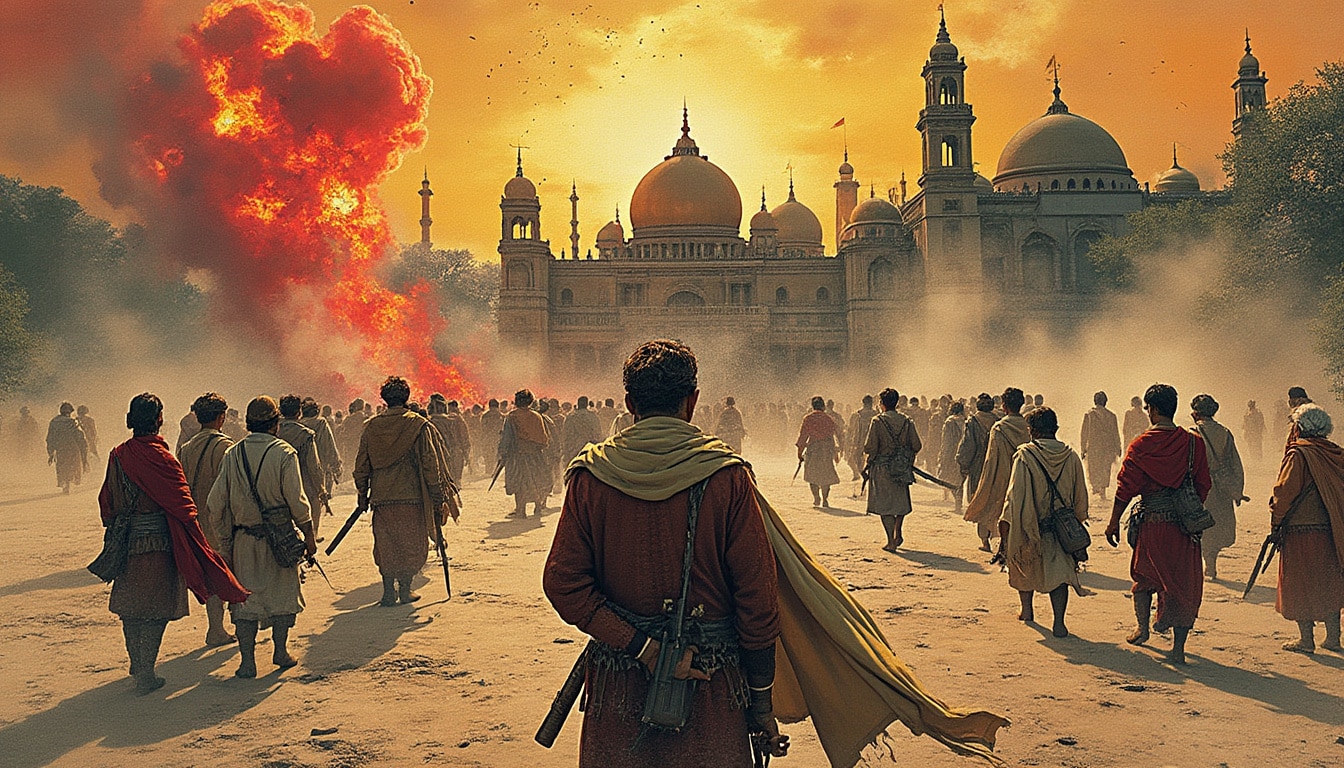
The Impact of the Wars on Split’s Modern Identity
The wars that have troubled the Balkans, especially during the dissolution of Yugoslavia in the 1990s, have left indelible marks on the city of Split. These conflicts not only reshaped political boundaries but also made profound impacts on community bonds and identities within Split. As the city emerged from war, its identity continued to be a composite of its complex past, interwoven with memory and hope for a peaceful future.
The aftermath of these conflicts brought issues of displacement, economic challenges, and a rampant need for reconciliation to the forefront. Efforts by international bodies like Amnesty International and Human Rights Watch aimed to address systemic inequities and provide platforms for peace and understanding, though progress remains slow.
Tables summarizing post-war demographics and economic impacts illustrate these changes:
| Year | Population Change 📉 | Economic Growth % 📈 | Unemployment Rate % 📊 |
|---|---|---|---|
| 1995 | -10% (Post-war exodus) | 2% | 25% |
| 2005 | -5% (Gradual recovery) | 4% | 15% |
| 2015 | 0% (Stabilization) | 6% | 10% |
| 2025 | +1% (Potential growth) | 8% | 7% |
The city’s journey towards rebuilding was also supported by community-led initiatives aiming for economic recovery, infrastructural development, and enhanced civic engagement. Organizations such as Peaceful Protest, Bend the Arc, and the Social Justice League played a major role in advocating for transformative justice in Split, championing dialogue and collaboration among divided communities.
Recent Movements and Present-Day Protests in Split
Despite improved conditions over the decades, tensions still linger in Split, occasionally flaring up into social unrest and protests. The recent years have seen numerous demonstrations addressing a wide range of issues—ranging from economic grievances to political accountability. These protests are often sparked by local concerns but quickly draw broader attention.
For example, protests related to housing shortages, unemployment, and political corruption have gained traction in Split, underpinned by a global movement for greater transparency and equity in governance. These manifestations are part of a broader set of social movements that seek to challenge systemic inequalities, aligned with groups like MoveOn and The Action Network, advocating for economic and social reforms at the grassroots level.
Key issues driving recent protests include:
- 🏠 Housing affordability and modern urban development challenges.
- 📊 Economic disparities and unemployment affecting youth and marginal communities.
- 🗳️ Political accountability and representation anomalies within local governance.
- 🌱 Environmental sustainability and resource management concerns.
- 📚 Educational equity and access for all community members.
The narratives around these protests often focus on the demands for change and justice, pressing the government to address these social grievances. While protests like these have the potential to bring about much-needed reforms, they also run the risk of escalating into unrest, especially if authorities resort to disproportionate measures to quell demonstrations.
Given the historical context of ethnic tensions in Split, the city’s government remains wary of any movements that could ignite latent conflicts. Authorities often find themselves balancing between ensuring public safety and preserving the right to peaceful assembly, as upheld by international rights bodies like Freedom Now and Global Witness.
The Global Implications of Local Unrest
Local protests and unrest in Split are symptomatic of wider global challenges, notably regarding the question of governance, equity, and identity. In the context of global political trends where issues like nationalism and multiculturalism are hotly debated topics, events in Split reflect broader societal shifts. Understanding this microcosm affords valuable insights into the challenges of nation-building in a globalized world.
The struggle for justice in Split is indicative of a broader fight for equality and human rights that is seen in numerous countries worldwide. The international community’s response to Split’s protests reiterates the importance of solidarity and support in addressing local conflicts. Such interactions foster a global exchange of ideas and solutions designed to overcome common obstacles faced by urban centers around the world.
The Role of Community in Shaping Split’s Future
Central to the resolution of social unrest in Split is community engagement and the active participation of citizens in shaping their future. Grassroots movements have often proven to be effective in bridging gaps between divided communities, fostering dialogue, and pushing for sustainable policies.
Local civic groups and international organizations such as Bend the Arc, Fight for the Future, and human rights advocates continue to play critical roles in facilitating this interaction. Their efforts are aimed at developing inclusive policies that reflect the diverse makeup of Split’s population while seeking to uphold justice and equality as core community values.
Table highlighting key community initiatives:
| Initiative 👫 | Description 📋 | Impact 🚀 |
|---|---|---|
| Split Unity Project | Fosters dialogue between ethnic groups | Improved communication and understanding |
| Local Youth Forum | Empowers young voices in policymaking | Enhanced youth participation in governance |
| EcoSplit Initiative | Promotes sustainable urban development | Reduction in carbon footprint |
| Cultural Heritage Alliance | Preserves and celebrates Split’s diverse history | Stronger cultural identity and tourism boost |
By involving a diverse range of stakeholders in decision-making processes, Split has the opportunity to move beyond its troubled past towards a more cohesive and resilient society. Empowering citizens through participation in local governance and communal projects not only addresses immediate social grievances but lays the groundwork for long-term peace and prosperity.
Towards a United Split
The city of Split stands at a crossroads, where choices made today will impact its future. To achieve lasting peace and harmony, it is imperative that the community continues to engage in proactive dialogue and collaboration. While historical grievances may provide a backdrop, the focus must shift towards unity, leveraging the rich cultural tapestry that defines Split.
Organizations advocating for a united city, such as the Social Justice League, endeavor to create platforms where different voices can be heard and respected. Through such efforts, the city hopes to redefine its narrative from one of unrest to one of unity and progress. As Split navigates its path forward, it sets an example for other cities grappling with similar issues, reinforcing the power of community and the potential for positive transformation when people come together for a common cause.
FAQ Section
| FAQs 🤔 | Answers 💡 |
|---|---|
| What are the main causes of ongoing unrest in Split? | The unrest is often driven by historical ethnic tensions, economic challenges, and political grievances. |
| How does the international community view the protests in Split? | Global organizations are concerned about human rights and support peaceful resolutions through advocacy and dialogue. |
| What can be done to alleviate tensions in Split? | Engagement in community-driven initiatives, inclusive governance, and sustained dialogue between groups are key strategies. |

Split, one of Croatia’s most captivating cities, attracts travelers from all over the globe with its stunning blend of ancient history and natural beauty. Yet, navigating a bustling tourist destination requires awareness and vigilance. This guide offers Safety Tips for…

Cleanliness and hygiene in Split
As travelers wander through the sun-drenched streets of Split, the importance of cleanliness and hygiene stands out prominently, enhancing both the charm and safety of this historical city. Split seamlessly melds its ancient roots with contemporary influences, making it a…

Pickpocketing and theft in Split
In Split, as in many cities around the world, the risk of pickpocketing and theft remains a concern for both travelers and locals. This vibrant Croatian city, known for its historic beauty and lively atmosphere, sees its fair share of…
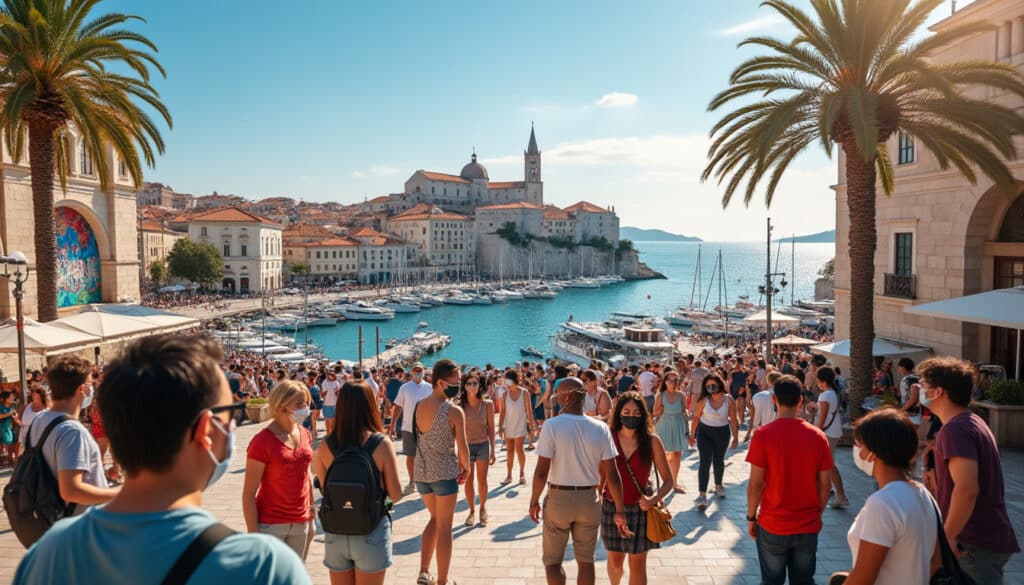
Safety in Split for travelers from different countries
Split, Croatia’s second-largest city, is a jewel on the Adriatic coast known for its rich history, stunning architecture, and irresistible attractions. However, beyond the allure of its vibrant markets and alluring beaches, it’s crucial for travelers to understand the safety…
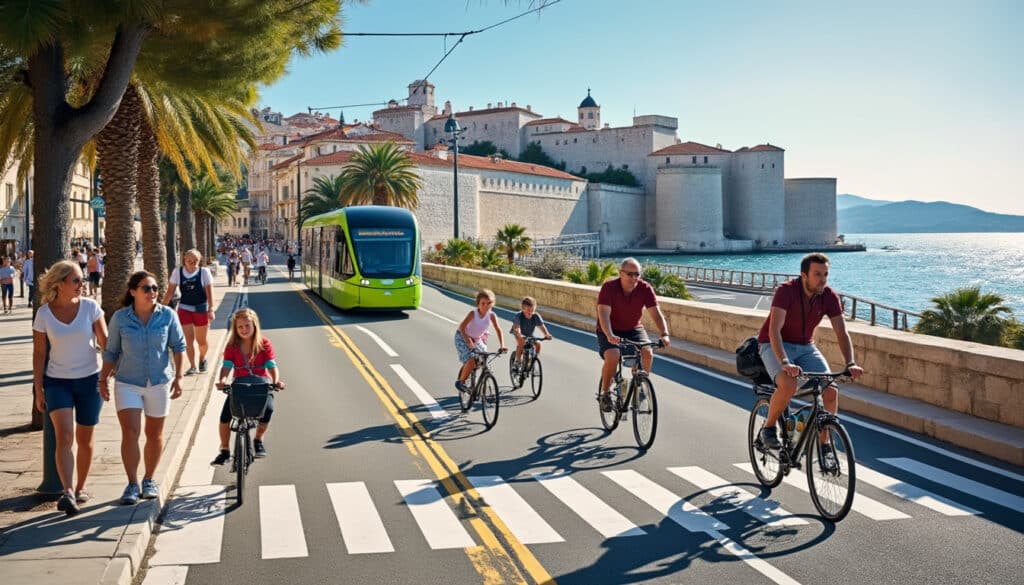
Ensuring safety in transportation is a fundamental aspect of any city’s infrastructure, particularly in bustling tourist destinations like Split, Croatia. With its vibrant community, historical sites, and stunning coastal views, understanding the nuances of transport safety can greatly enhance your…

